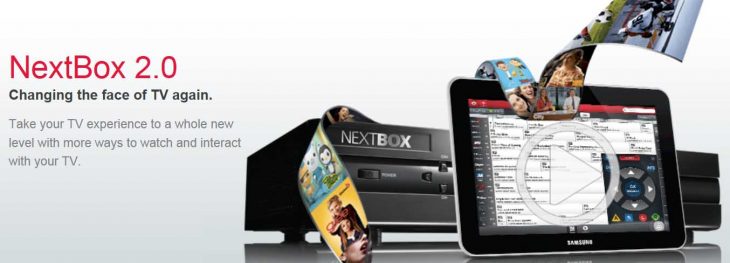
TORONTO – The future of cable is IP, and the CEO of Rogers says the company plans to take a similar leadership role in advancing its IP network offerings for customers that it did in introducing smartphones.
“Everyone is going IP, that is the future of cable,” said Rogers president and CEO Nadir Mohamed who also announced he will retire in January 2014, but will continue to lead the company through 2013. He was speaking at a media call this morning in Toronto. Late yesterday the company released its fourth quarter results of 2012 which beat analysts’ forecasts.
For the quarter it reported revenue of $3.26 billion and earnings were 88 cents – beating estimates of $3.19 billion and 72 cents per share. Net income was $455 million, up from $350 million a year earlier. The company also announced an annualized dividend rate increase of 10% to $1.74 per share.
"We exited 2012 with accelerating growth across our asset mix and with continued improvements in the strength of our key metrics," said Mohamed. "It was a record quarter for smartphone sales in our wireless business where data revenue growth continues to accelerate. Our cable division executed well with strong Internet growth and industry-leading margins, and our media business continued to improve and grow. Importantly, we achieved or exceeded all of our full year financial guidance metrics and are well positioned for 2013."
Rogers Wireless activated and upgraded approximately 940,000 smartphones, compared to approximately 791,000 in the fourth quarter of 2011 for the three months ended December 31, 2012. Rogers said it’s the highest number of smartphone activations and upgrades in any quarter in its history.
The smartphones activated and upgraded during the quarter were predominantly iPhone, Android, Windows Mobile and BlackBerry devices, of which approximately 29% were for subscribers new to Wireless. The overall addition of smartphones increased the percentage of subscribers with smartphones to 69% of Wireless' total postpaid subscriber base at December 31, 2012, compared to 56% as at December 31, 2011.
Total retention spending, including subsidies on handset upgrades, was $320 million in the three months ended December 31, 2012, compared to $251 million in the corresponding period of 2011. The increase said Rogers reflects a higher number of hardware upgrades by existing subscribers than during the same period last year combined with a shift in the mix of smartphones activated towards higher value devices.
Rogers however continues to lose cable subscribers – more than 83,000 of its 2.2-million subscribers cut the cord in the last year in favour of IPTV offerings such as Bell’s Fibe TV and OTT services such as Netflix. By year’s end, Bell expects to have its Fibe TV service available in some 3.3 million homes

Mohamed told Cartt.ca however that he was not overly concerned by the losses since increasingly customers are turning to the Internet for content and Rogers will be there to compete.
He says Rogers will compete both on price and features with Bell and others by moving aggressively to deliver more products that take advantage of Web 2.0 technologies and IP networks, adding that the “Internet is the next big platform.”
Mohamed is betting on the bandwidth of cable combined with the flexibility of IP will enable Rogers to focus on consumers who are willing to pay for more digital services, while building audiences and deepening viewer engagement via their smart phones, tablets or laptops.
Another aspect of IP networks that Rogers will increasingly focus on is the Cloud and the growing market for machine-to-machine (M2M) communications management and services which he says will grow into a $100 million business. M2M technologies allow both wireless and wired systems to communicate with other similar devices. In 2011 Rogers landed a six-year contract to connect Hydro-Quebec’s central system with nearly 600 smart meter collectors. These collectors accumulate the data collected from the province’s nearly 3.8 million smart meters.
Mohamed says Rogers will also be working to expand its partnership with CIBC to turn smartphones into mobile wallets which was first announced last November.
It also plans to continue to leverage its sports content and in particular Sportsnet which he claims is the number one branded sports channel in Canada.
He also conceded that “more work has to be done” in addressing Canadians concerns over costs and quality of wireless services in Canada. Rogers completely supports the development of an industry Code of Conduct he added, which has been the subject of a CRTC hearing all this week.
2012 Fourth quarter highlights:
Consolidated revenue growth of 3% was driven by Wireless network revenue growth of 4%, Wireless equipment revenue growth of 13%, Cable revenue growth of 2%, and Media revenue growth of 1%, partially offset by declines at Rogers Business Solutions compared to the same quarter last year.
Wireless data revenue grew by 21% which, combined with a continued slowing in the rate of decline of voice ARPU, helped drive a 2.8% increase in blended ARPU. Wireless data revenue now comprises 42% of Wireless network revenue. Wireless activated and upgraded 940,000 smartphones, of which approximately 29% were for subscribers new to Wireless. Wireless also recorded a continued reduction in postpaid churn on a year-over-year basis.
Consolidated adjusted operating profit increased by 7% with a 3% increase at Wireless, a 4% increase at Cable, a 35% increase at RBS, and a 70% increase at Media compared to the same quarter last year. The increase in Media adjusted operating profit was largely driven by lower programming costs associated with the recently concluded NHL player lockout in addition to cost efficiencies.
Consolidated margins of 36.1% were up 117 basis points, driven by strong adjusted operating profit margins of 40.2% and 49.4% at Wireless and Cable, respectively, reflecting revenue growth combined with solid execution against cost reduction and simplification efforts. Adjusted net income improved 30% from the same quarter last year.
Expanded 4G broadband network to now cover approximately 60% of the Canadian population. Rogers claims it offers the largest selection of LTE devices of any carrier in Canada.
Cable continued to increase the Internet speeds available to its customers, boosting the "Ultimate tier" download speed from 75 Mbps to 150 Mbps across approximately 90% of its footprint.
Subsequent to the end of the fourth quarter of 2012, on January 14, 2013, Rogers announced a multipart strategic transaction with Shaw Communications ("Shaw") to acquire Shaw's cable system in Hamilton, Ontario and secure an option to purchase Shaw's Advanced Wireless Services ("AWS") spectrum holdings in 2014. It will also sell to Shaw our one-third interest in specialty channel TVtropolis and enter into negotiations with Shaw for the provision of certain services in Western Canada. Rogers' net cash investment is expected to total approximately $700 million if all aspects of the transaction are approved.
Media closed the acquisition of the Score Television Network and related television assets into a trust pending final approval from the Canadian Radio-television Telecommunications Commission ("CRTC"). The acquisition builds on Rogers' rich history in sports broadcasting and reinforces its commitment to delivering premium sports content to its audiences on their platform of choice. Subject to final regulatory approval, anticipated in the first half of fiscal 2013, the network will be rebranded under the Sportsnet umbrella.
In December 2012, Media received approval from the CRTC to acquire CJNT-TV Montreal ("Metro14 Montreal"). The transaction closed in early February 2013 and the station was re-launched as City Montreal in this key Quebec market. With the acquisitions and agreements put in place during 2012, City's reach has increased by more than 20% to over 80% of Canadian households.



